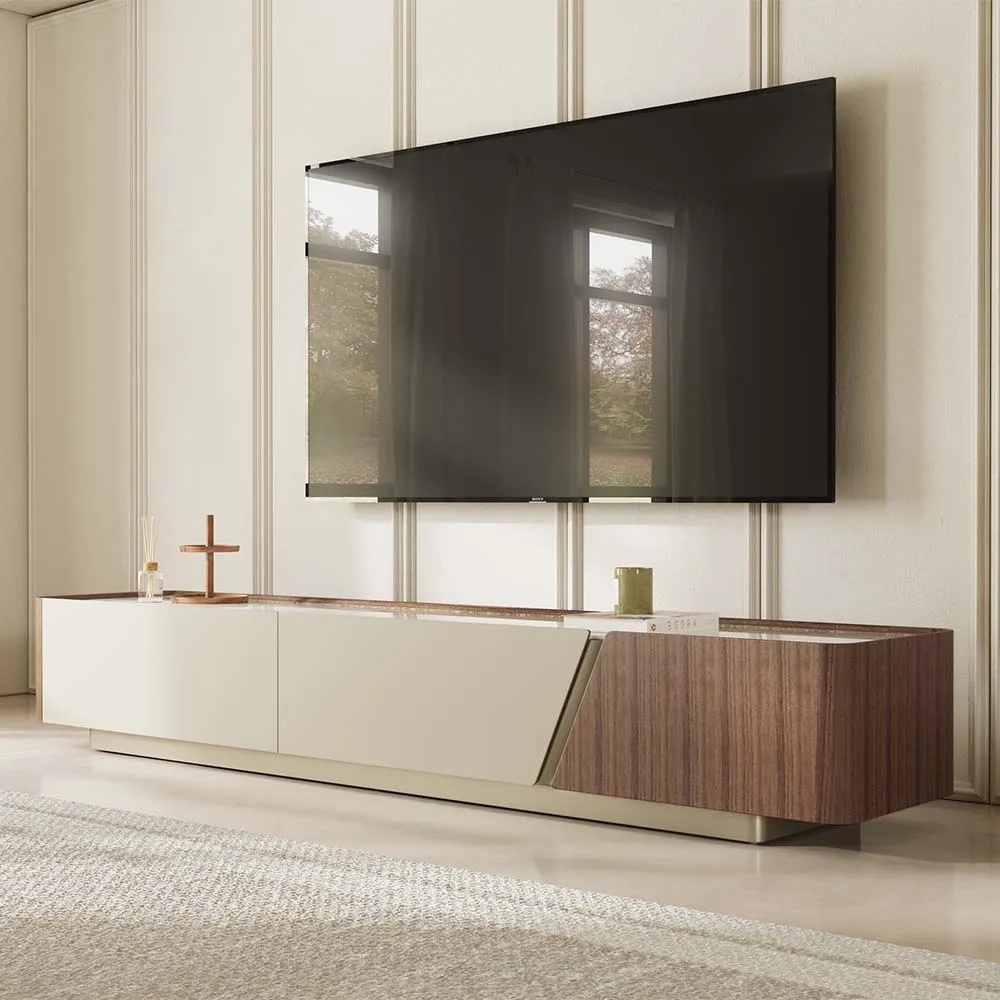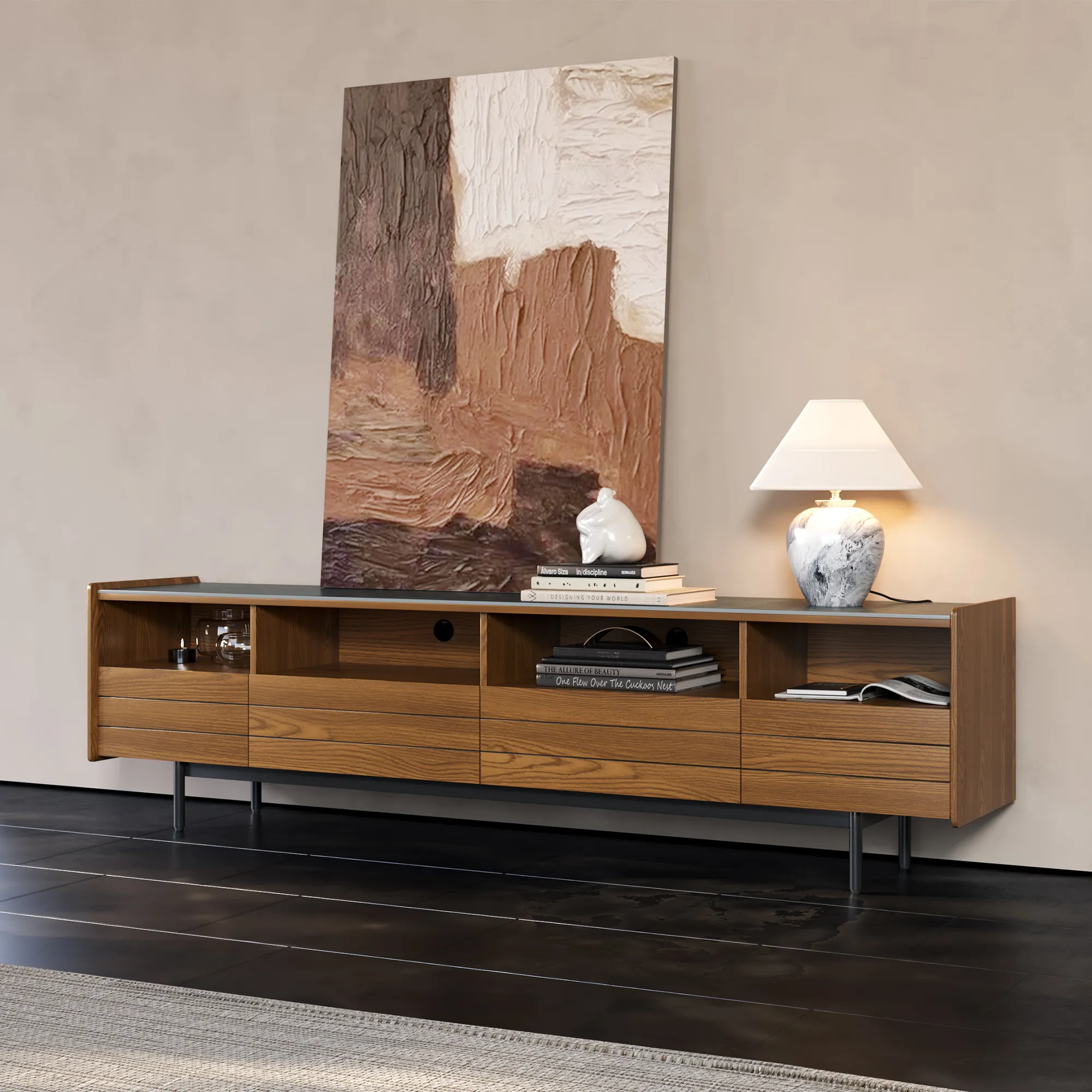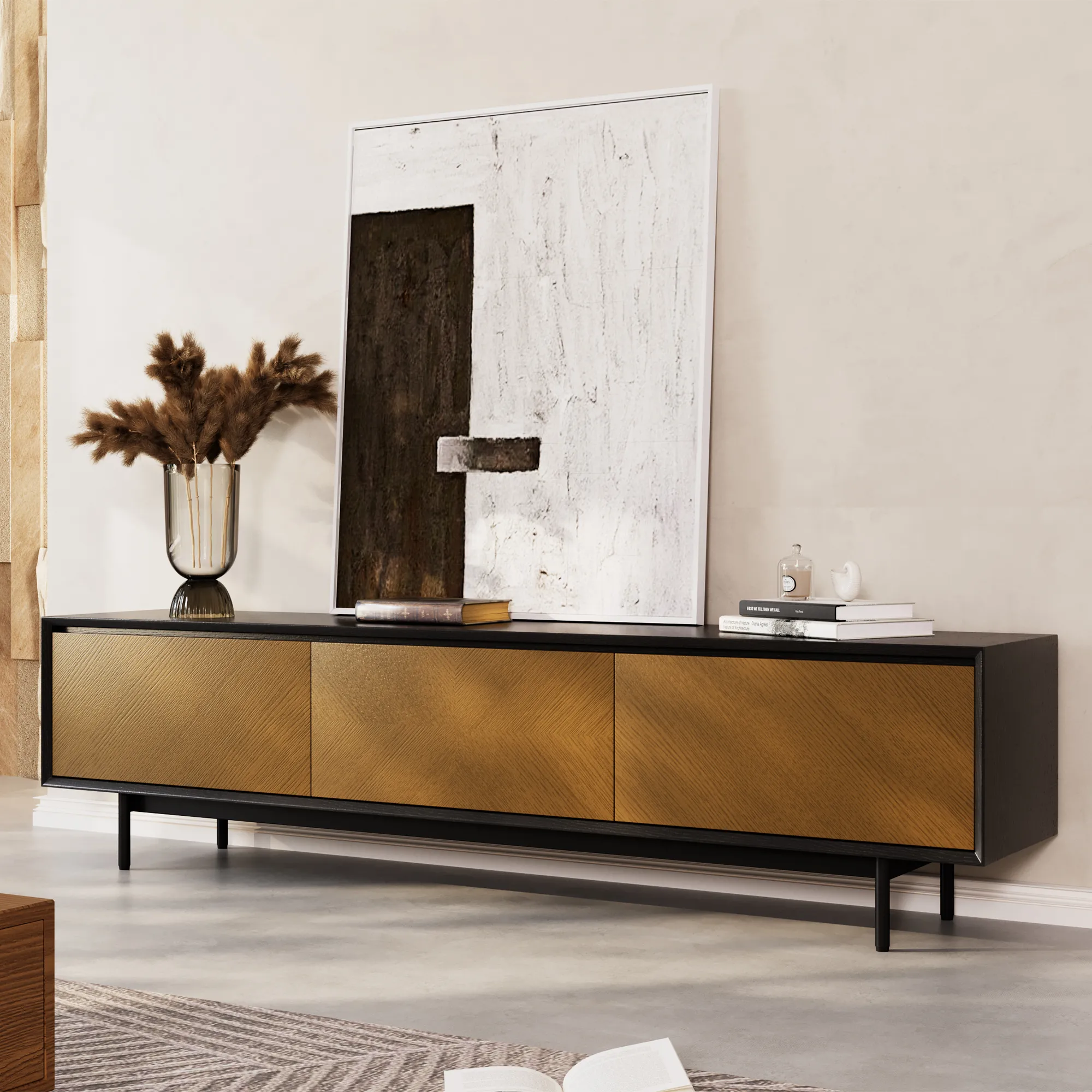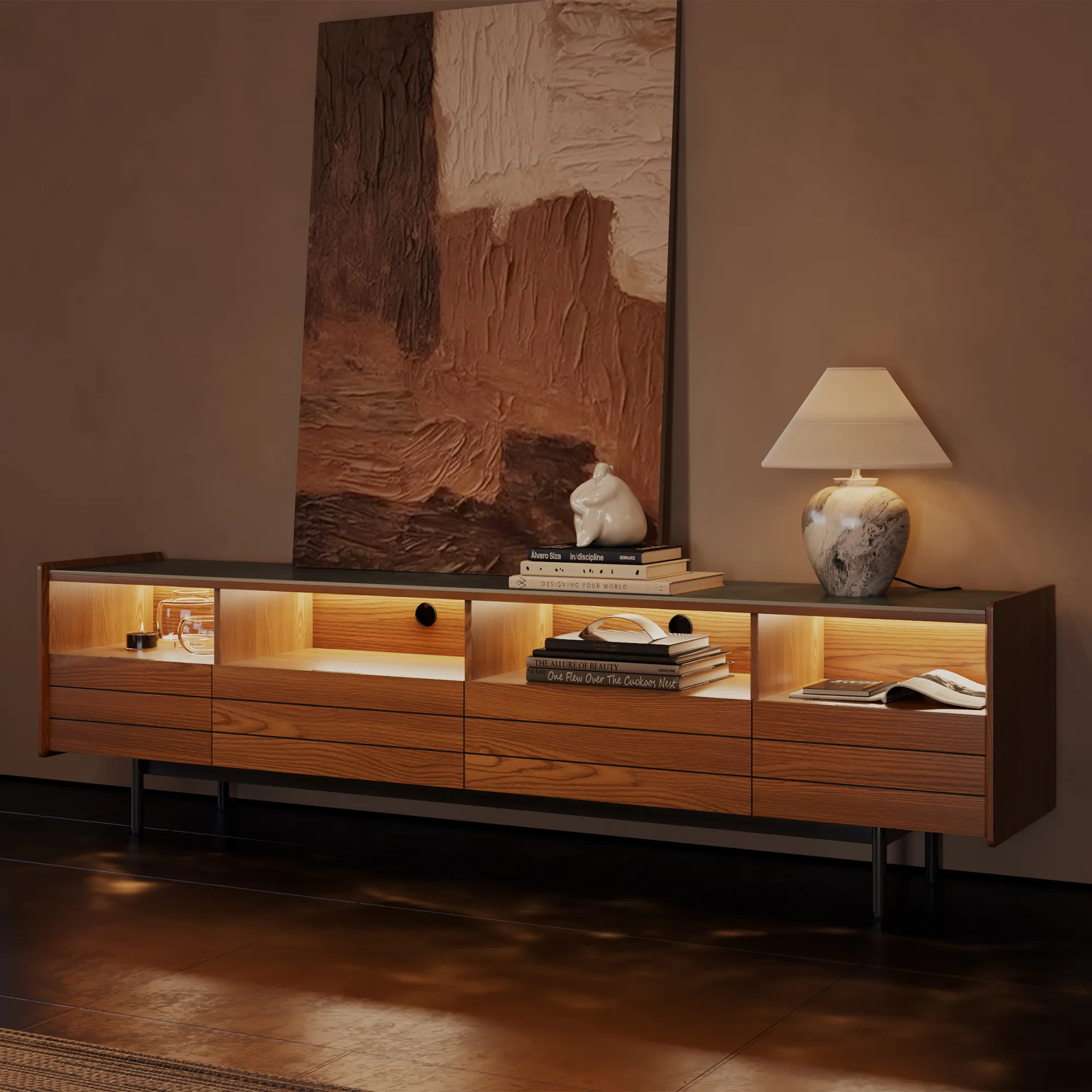So, how do you know which size is just right? Let’s divide it by screen size, room dimensions, and function. (P.S. Don’t miss the FAQ section at the end—many of your burning questions are answered there!)
Why Entertainment Center Size Matters
Choosing the wrong size entertainment center can make your living room feel cramped or look off-balance.
Picture this: you’ve just installed a sleek 75-inch TV, but the only surface available is a 60-inch stand. The TV juts out awkwardly on both sides, making the setup look unstable and visually unbalanced. It’s a common scenario that not only disrupts aesthetics but also poses safety risks. For example, imagine placing a 75-inch TV on a 60-inch stand—it is unstable, and the whole setup looks visually awkward. A TV stand that’s too small risks tipping over, while one that’s too large can overwhelm your space.
More importantly, the entertainment center is more than just a place to park your screen—it also stores media accessories, conceals cords, and sets the tone for your interior style. That’s why getting the size right matters both functionally and aesthetically.
How to Measure Your TV Correctly
Before shopping, take the time to measure your TV—not just the screen size, but the actual dimensions:
-
Screen Size: This is measured diagonally across the screen, not the width. A 65″ TV is around 57″ wide.
-
TV Width: Measure the horizontal width from edge to edge.
-
TV Base: Some TVs have feet that are placed far apart, so double-check this to ensure the stand can support them.
-
Wall Clearance: If your entertainment center will sit against a wall, allow extra space for ventilation, power cords, and soundbars.
According to Reddit users in r/HomeDecor, a TV stand that’s too narrow for your screen can make the entire setup look top-heavy or off-balance. Many recommend choosing a unit that’s at least 10 inches wider than your TV for visual harmony.
Entertainment Center Sizing Guidelines by TV Size
Here’s a general size chart to help you find a suitable match, based on both industry recommendations and user feedback:
| TV Size | Recommended TV Stand Width |
| 43″ or smaller | At least 50″ |
| 50–55″ | At least 60″ |
| 60–65″ | At least 70″ |
| 70–75″ | At least 80″ |
| 75″ or larger | At least 85″+ |
A good rule of thumb: your entertainment center should be at least 6–10 inches wider on each side of the TV for balance and safety.
Consider Your Room Size and Viewing Distance
The entertainment center also needs to match the scale of your room:
-
Small rooms (under 150 sq ft): Choose sleek, minimal TV stands with low profiles.
-
Medium rooms (150–300 sq ft): Look for stands with added storage or open shelving.
-
Large rooms (over 300 sq ft): Go bold with wall units, wide media consoles, or fully assembled pieces with built-in lighting.
Also, maintain an ideal viewing distance—generally 1.5 to 2.5 times the diagonal screen size for the best experience.
Mind the Height and Depth—two often overlooked dimensions that significantly impact comfort and functionality.
To ensure visual comfort, your eye level when seated should align with the center of the TV screen. That’s why most TV stands are between 20″ to 30″ tall.
Equally important is depth: standard entertainment centers range from 15″ to 24″ deep. Ensure your stand is deep enough to house media players, game consoles, or sound equipment while allowing for adequate airflow.
Extra Storage vs. Open Design: What’s Best for You?
Depending on your lifestyle, you may prefer:
-
Storage-heavy units: Great for families, gamers, and those with lots of media equipment.
-
Open or floating stands: Best for minimalist aesthetics and rooms with limited floor space.
If you’re working with a small living room or prefer a sleek, modern aesthetic, consider a floating TV stand. These wall-mounted designs visually open up floor space and allow for easy cleaning underneath.
Why Fully Assembled Matters
Assembling furniture can be a hassle, especially with large media units. That’s why Povison offers fully assembled TV stands that are ready to go right out of the box. No complicated instructions, missing screws, or mismatched parts. Just timeless design, seamless installation, and immediate usability.
Fully Assembled Options That Fit Just Right
If you’re sold on the benefits of fully assembled furniture—convenience, craftsmanship, and zero hassle—then you’ll want to explore these standout options. Povison’s ready-to-use entertainment centers combine thoughtful design with top-tier quality, ensuring a perfect fit for your space from the moment they arrive.
Here are three models from Povison that combine form, function, and fit:



Frequently Asked Questions
We’ve compiled answers to the most common sizing and setup questions based on what users often search for on Google and forums like Reddit. If you’re still unsure about certain measurements or combinations, this section is for you.
Should the TV be bigger than the entertainment center?
Technically, yes—but it’s not recommended. A wider TV than your stand can feel unstable and visually off. Go for at least 6–10 inches wider on the stand.
How high should a TV stand be?
Most experts recommend 20–30 inches in height, so that the center of the TV aligns with your eye level when seated.
How deep should an entertainment center be?
Between 15″ to 24″, depending on how much storage or how many devices you need to accommodate.
Can I use a wall-mounted TV with a wide console?
Absolutely. Many homeowners use both: a mounted TV paired with a wide, low-profile console for storage and aesthetics.
Final Thoughts: Invest in Style and Fit with Povison
When it comes to finding the right entertainment center, don’t settle for a one-size-fits-all solution. From compact modern consoles to wide, fully assembled mid-century pieces, Povison offers furniture that matches your space, your style, and your screen.
Explore our full collection of TV stands and entertainment centers to find the perfect fit for your home. Designed with durability, beauty, and convenience in mind, every piece reflects Povison’s commitment to craftsmanship and modern living.

I had a similar issue when upgrading to a larger TV—ended up with a too-small entertainment center. Now I always measure the space and TV first before making a decision. Great tips on how to avoid those common pitfalls!